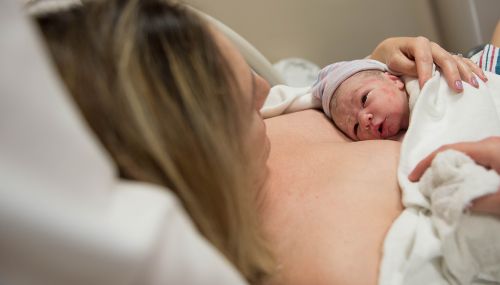
- Our studies
- Our research
- Publications and resources
- Data access and training
- About
- News
- Events
- Get in touch
- Join our mailing list


Children conceived through medically assisted reproduction are more likely to be born premature and are at greater risk of being born small than naturally conceived babies, according to new research by the UCL Centre for Longitudinal Studies and the University of Utah.
However, the study of almost 250,000 US families finds that differences in birth weight and pregnancy term between medically assisted reproduction (MAR) – including techniques such as IVF treatment, artificial insemination and fertility-enhancing drugs – and naturally conceived children become insignificant once family circumstances are considered.
Co-author, Dr Alina Pelikh (UCL Centre for Longitudinal Studies) explained: “Rather than the infertility treatment itself, our new findings highlight the importance of parents’ underlying fertility problems and health conditions, and infants’ birth characteristics, such as their birth order and whether they are a twin, on birth weight and pregnancy term.”
The researchers analysed data on 248,000 babies born in Utah, USA between 2009-2017 whose birth records are part of the Utah Population Database. They examined information to look at the effects of different types of infertility treatments on pregnancy term and children’s birth weight. The researchers analysed rich data on mothers’ health, including pre-pregnancy body mass index (BMI) and blood pressure, parents’ age and education level, before examining information on infant birth order and multiple births.
Around 5% of infants were conceived using MAR, with fertility-enhancing drugs used by 60%, assisted reproduction (including IVF) by 26% and artificial insemination by 14%.
The study found that children who were conceived through MAR were 10% more likely to be born premature and had 9% greater odds of being born small than naturally conceived infants. More invasive treatments – such as assisted reproduction and artificial insemination – were more strongly associated with adverse birth outcomes, whereas infants conceived using fertility-enhancing drugs were more similar to those who were naturally conceived.
“This study was possible because of the Utah Population Database and the secure access it provides to anonymized data. This has allowed us to study births throughout the state to understand possible effects on newborns associated with mothers who conceived naturally or through medically assisted methods,” said co-author, Professor Ken Smith (University of Utah). “By comparing births from the same mother we were able to better isolate the impact on these births of medically assisted technologies.”
Once the researchers considered mothers’ health, parents’ socioeconomic background, and infants’ birth characteristics, the differences in adverse birth outcomes were significantly reduced for all types of treatments.
The research then focused on a subgroup of mothers who had given birth to both MAR and naturally conceived children over the eight-year period. After accounting for mother’s age at birth, pre-pregnancy BMI, and infants’ birth characteristics, the differences in pregnancy term and children’s birth weight between siblings disappeared, suggesting that family circumstances and unobserved parental characteristics, such as genetic traits, are important factors in explaining the association between MAR and children’s adverse birth outcomes.
Dr Pelikh added: “We found limited evidence of the effects of medically assisted reproduction treatments on pregnancy term and birth weight through comparing siblings’ birth outcomes, which is in line with existing studies from the Nordic countries.”
Co-author, Dr Alice Goisis (UCL Centre for Longitudinal Studies) said: “Obtaining similar results in highly diverse contexts – in terms of demographics, fertility rates and access to the medically assisted reproduction treatments – strengthens the argument that adverse birth outcomes among medically assisted reproduction conceived infants are unlikely to be driven by the reproductive technology itself.”
“This new evidence can go on to enrich existing health guidance about the risks and benefits of infertility treatments, hopefully raising awareness among families who are thinking about using medically assisted reproduction to help them conceive.”
Media coverage of this research
Medical Xpress – Low birth weight among IVF children not linked to infertility treatments
Physician’s Weekly – Adverse Birth Outcomes Tied to ART Unlikely Due to Treatment
Further information
‘Medically Assisted Reproduction Treatment Types and Birth Outcomes: A Between- and Within-Family Analysis,’ by Alina Pelikh, Ken R. Smith, Mikko Myrskylä, and Alice Goisis was published in Obstetrics & Gynecology in January 2022.
Ryan Bradshaw
Senior Communications Officer
Phone: 020 7612 6516
Email: r.bradshaw@ucl.ac.uk